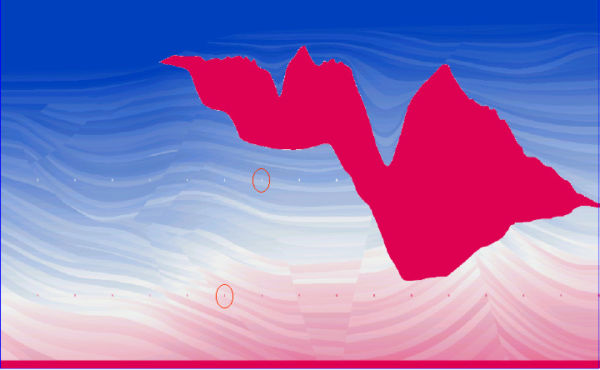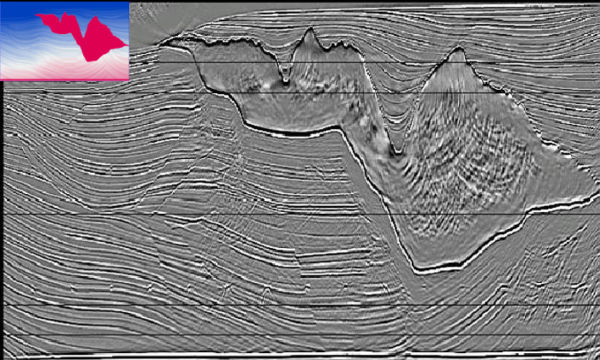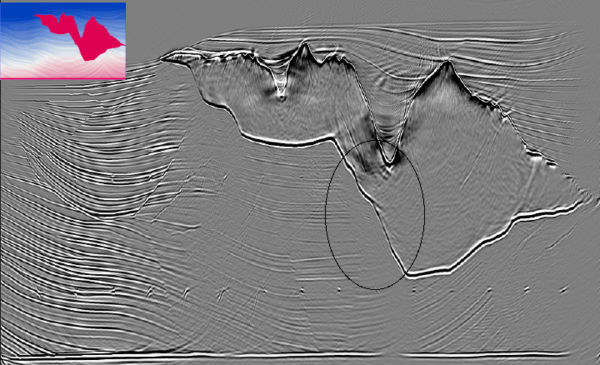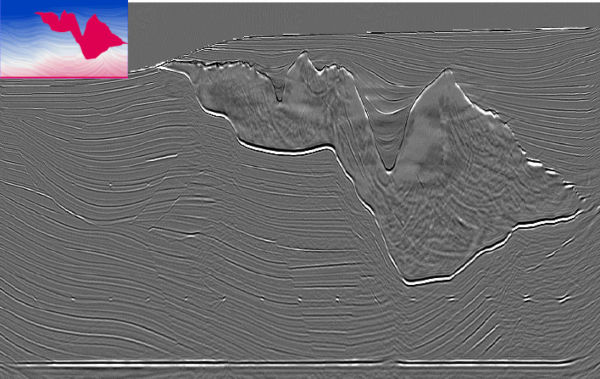The SMAART JV Sigsbee Model
The SMAART JV (Subsalt Multiples Attenuation And Reduction Team Joint Venture) was an industry-sponsored joint venture focused on designing realistic Earth models and acquiring data over them to test the then current methodologies for imaging and multiple suppression. The first of the two images in Figure 10 shows the model used to synthesize the data as well as several images of the synthetic data. What is most interesting is the excellent amplitude response of the two-way algorithm.
Figure 10 shows the Sigsbee model in part (a), a Kirchhoff vertically varying gained image in part (b), a one-way image with no gain in part (c), and a full illumination corrected two-way image in part (d). The two-way image shows outstanding amplitude restoration and, in fact, when compared to the model in part (a), provides an excellent image proportional to reflectivity.
(a)
SMAART
JV
Sigsbee
salt
model
|
The zoomed images in Figure 11 that came from the original images in Figure 10 confirm the much higher quality imaging capabilities of two-way methodology.
(a) Zoom comparison of one-way on the left and two-way on the right 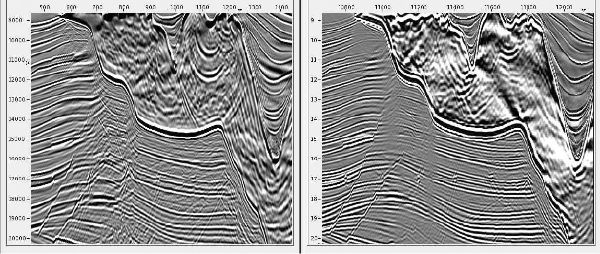
(b) Zoom comparison of one-way on the left and two-way on the right 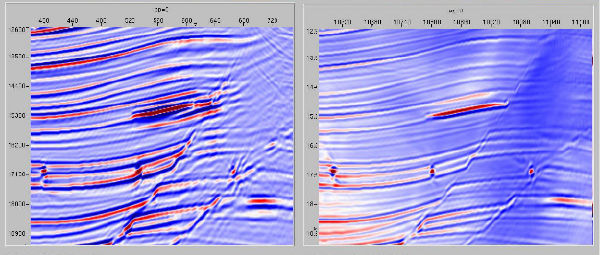
|
- Introduction
- Seismic Modeling
- History
- Zero Offset Migration Algorithms
- Exploding Reflector Examples
- Prestack Migration
- Prestack Migration Examples
- Common Azimuth on the SEG/EAGE C3-NA Synthetic
- Kirchhoff versus One-Way on a Gulf of Mexico 2D Salt Synthetic
- A North Sea Sill Synthetic
- Marmousi Case Study
- An Imaging Note and the BP 2.5 Dimensional Data
- BP 2.5 D Data
- BP 2004 Salt Structure Data
- SEG AA' Data Set
- Migration from Topography
- The SMAART JV Sigsbee Model
- SMAART JV Pluto Data Set
- SEG/EAGE C3-NA Data Imaging
- Anisotropic Earth Models
- Data Acquisition
- Migration Summary
- Isotropic Velocity Analysis
- Anisotropic Velocity Analysis
- Case Studies
- Course Summary
